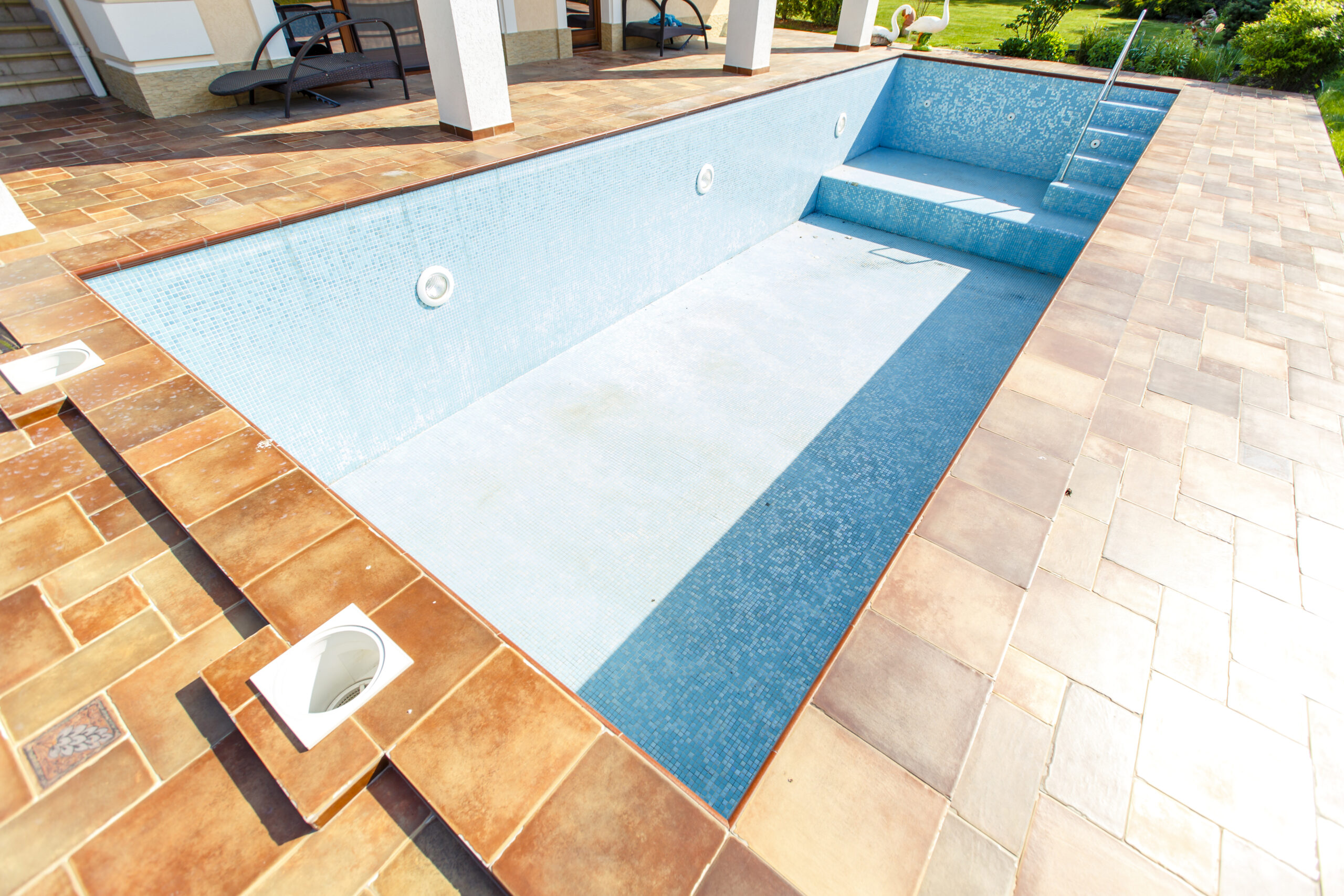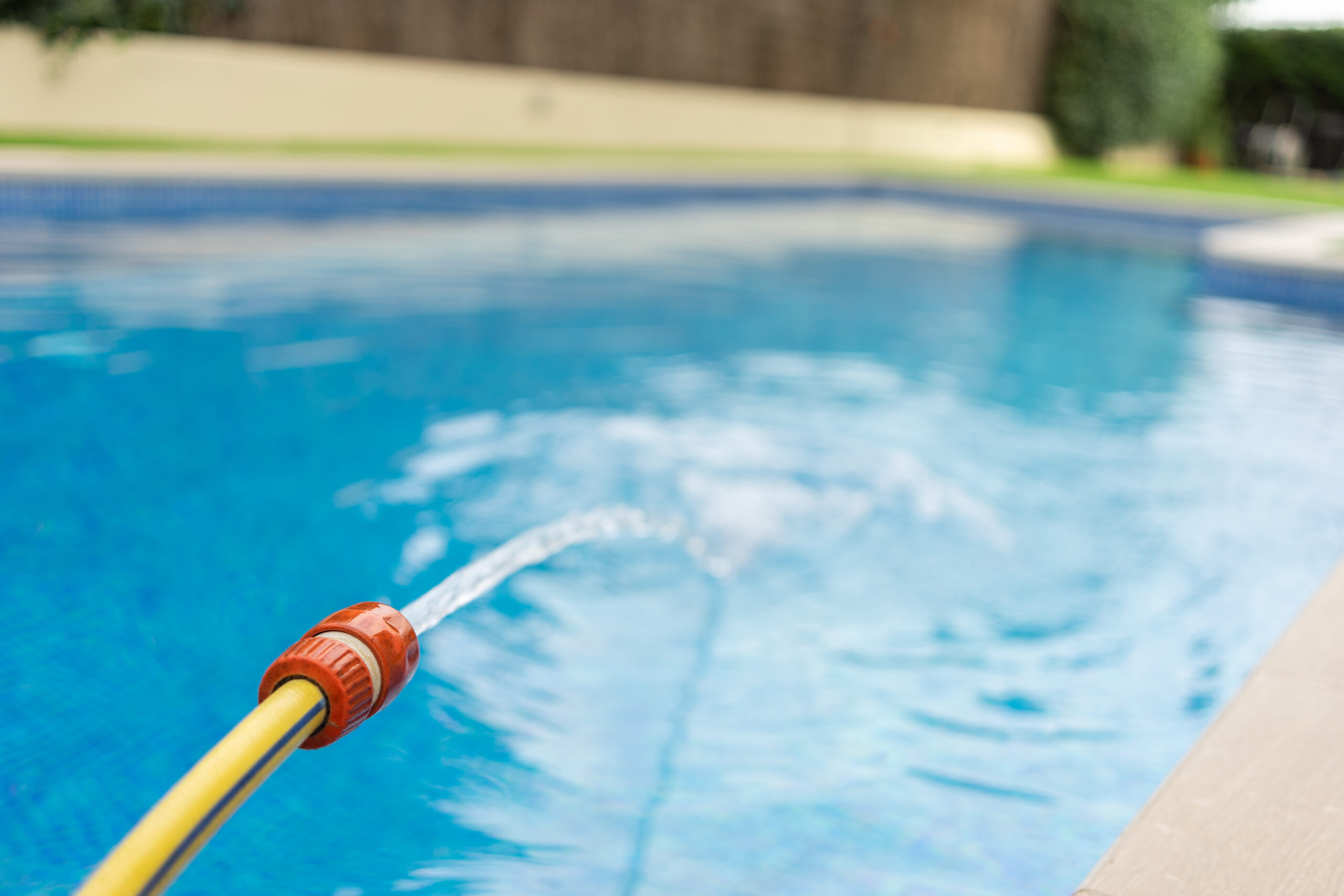You’re ready to drain and refill your pool, but you’re not quite sure where to start. Don’t worry! We’ve got you covered with this comprehensive guide.
You’ll learn the importance of regular maintenance, gather essential tools, master the draining process, and understand how to refill your pool properly.
Let’s dive in and get your pool looking its absolute best.
Understanding the Importance of Regular Pool Maintenance
You’ve got to understand, regular pool maintenance isn’t just about keeping the water sparkling; it’s crucial for your pool’s longevity and your safety. The importance of pool sanitation can’t be overstated. It prevents algae growth, keeps the water clear, and most importantly, eliminates harmful bacteria that could pose health risks.
Adhering to a strict maintenance schedule brings several benefits. For starters, routine cleaning reduces wear on your pool equipment extending its lifespan. Consistent chemical balancing protects the pool surface from damage thus saving you from costly repairs or replacements down the line.
But perhaps the biggest advantage lies in maintaining water quality. Regularly testing pH levels allows for accurate adjustments ensuring a safe swimming environment while preserving chemical effectiveness.
Don’t forget skimming and scrubbing: these seemingly mundane tasks are essential in preventing debris accumulation which can affect water circulation and filtration.
A well-maintained pool also enhances user experience by providing clean, inviting waters on demand – no surprises when you’re ready for a dip! So yes, it involves work but remember this: with proper care and attention to detail you’ll derive maximum enjoyment from your investment while protecting everyone who uses it.
Preparing Your Pool for Draining: Necessary Tools and Safety Measures

Before we dive in, let’s make sure we’ve got all the right tools and safety measures in place. Preparing your pool for draining isn’t a task to be taken lightly.
1. Pool Cover Necessities: You’ll need a sturdy, fit-to-size pool cover. Don’t skimp on quality; this is crucial for protecting your pool from debris when it’s empty.
2. Sump Pump: This will remove the water efficiently and safely. Opt for one with an automatic shut-off feature to prevent dry-running.
3. Chemical Safety Measures: Store chemicals properly when not in use and handle them with care during the process.
Ensure that you’re wearing protective gear – gloves, goggles, and appropriate footwear – while handling any chemicals or equipment. Remember: safety first!
Now, let’s discuss these three essentials further:
A good quality cover protects the pool surface while ensuring no unwanted material gets in during the draining process.
The sump pump plays a pivotal role by effectively removing water from your pool without damaging its structure.
Finally, always adhere to chemical safety measures; mishandling can lead to accidents or damage to your pool’s integrity.
Remember: thorough preparation leads to mastery of this crucial task!
Detailed Steps to Efficiently Drain Your Pool
Let’s now delve into the nitty-gritty of how to efficiently empty that swimming area of yours.
First off, it’s crucial to understand your pool design as it directly impacts the drainage process. Pay particular attention to where your main drain and skimmer lines are located.
Next, locate your pool’s drainage system. It may be a built-in feature or an external pump. If you’ve got a built-in system, find its valve usually situated near the filter system. For pools with external pumps, you’ll need to connect them using a suitable hose before starting the draining process.
Once you’re set up, slowly open the valve or start your pump-this minimizes potential damage from rapid changes in water pressure. Keep an eye on things: You don’t want to let your pool drain completely as this can damage its structure and lining.
Remember also that weather plays a role in this operation. Avoid draining during heavy rain, as excess water could compromise the integrity of your pool’s structure.
Lastly, ensure safe disposal of drained water according to local regulations-mismanagement can lead to fines or environmental harm.
The Correct Method for Refilling Your Pool
After you’ve properly drained and cleaned it, it’s time to refill that swimming area using the correct method. This process is not only vital for maintaining an optimal pool water temperature but also key in practicing water conservation methods. Here are three detailed steps:
1. Use a garden hose connected to your home supply. Before starting, ensure there aren’t any restrictions on water usage in your area that could impact the refilling process.
2. As you fill, monitor the pool’s temperature regularly. Aim for around 78-82 degrees Fahrenheit – this is generally considered comfortable while being energy-efficient.
3. Once filled, allow the water to circulate for at least 24 hours before adding chemicals.
Remember to be patient; filling can take several hours or even days depending on your pool’s size and your water pressure.
Importantly, consider using rainwater harvesting systems if available in your region as part of effective water conservation methods when refilling. Alternatively, hiring a professional service can save time and often utilize larger hoses which speed up the process while conserving resources.
Tips and Tricks for Pool Water Balance and Maintenance After Refilling

You’ll find it’s crucial to maintain a balanced water chemistry in the swimming area for not only clear and sparkling water but also to ensure the longevity of your pool equipment. Mastery of Chemical Levels Adjustment is fundamental in this process.
Begin with testing the pH, hardness, alkalinity, and chlorine levels using quality test kits or strips. Aim for a pH level between 7.2 – 7.8, calcium hardness should be within 200-400 parts per million (ppm), total alkalinity at 80-120 ppm, and free chlorine ranging from 1.0 – 3.0 ppm.
Now let’s delve into Algae Prevention Techniques. Algae spores can invade your pool through wind, rain or even contaminated swimwear; thus prevention is key to maintaining crystal clear waters. Regularly shocking your pool with high levels of chlorine will eliminate algae before they have a chance to bloom.
To supplement these efforts, introduce algaecide into your maintenance routine following the manufacturer’s guidelines closely for optimal results. Ensuring that you brush the corners and hidden areas regularly will dislodge any stubborn growths which can then be eliminated by the filter system.
Frequently Asked Questions
What Are the Common Mistakes to Avoid When Draining and Refilling a Pool?
You’ve got to avoid incorrect drainage techniques and not taking proper refill precautions. Don’t drain too quickly or you’ll damage the pool. Always ensure water levels don’t drop dangerously low while refilling.
How Often Should I Completely Drain and Refill My Pool?
You shouldn’t drain and refill your pool too often. As a rule of thumb, aim for every 5-7 years. It’s key for both pool maintenance and water conservation to not overdo it.
Can I Use Regular Tap Water to Refill My Pool?
Yes, you can use regular tap water to refill your pool. However, be mindful of the water quality and ensure it’s suitable for the chlorination process to maintain a safe, clean swimming environment.
What Is the Cost Implication of Draining and Refilling a Pool?
You’ll face significant costs draining and refilling your pool, including water bills and potential environmental impact fees. It’s essential to consider these aspects for both your budget and water conservation efforts.
Are There Specific Pool Drainage and Refilling Regulations I Should Be Aware Of?
Yes, you should be aware of specific drainage legislation and permit requirements. It’s critical to check local regulations before draining your pool, as they can vary significantly. This ensures you’re compliant and avoids potential fines.
